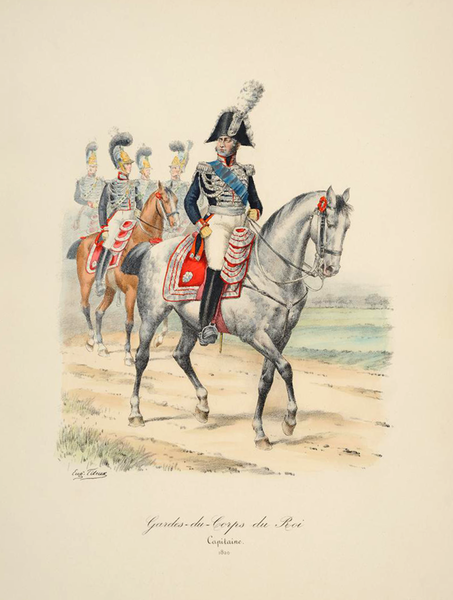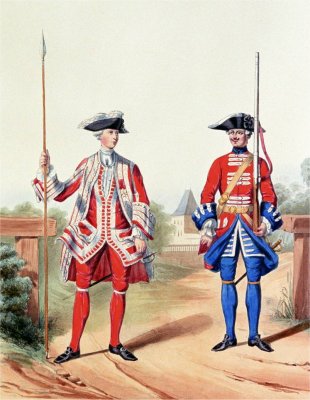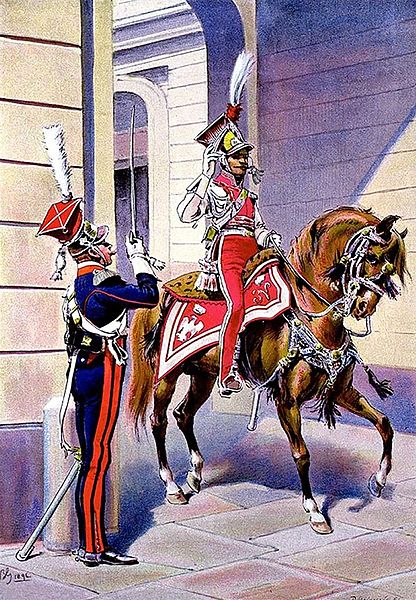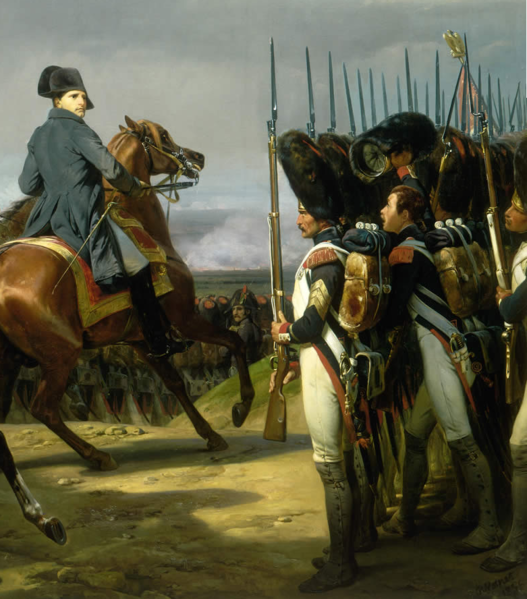The
Maison Militaire du Roi de France is a military organisation whose main role is to ensure the protection of the king and his family. Their second role is to serve as an elite reserve for the main army, in charge of the most difficult attacks during battles. The organisation is under the authority of the Secretary of State for the Maison du Roi, but the budget is controlled by the Secretary of State for War.
The organisation date from the early Middle Age, but the units that compose it have changed over time, becoming more complexed and organised to reach an apogée under Louis XIV. After this, the financial crisis forced the kings to reduce expenses of the state and to simplify the Maison Militaire. For example, the emblematic unit of the
Mousquetaires had to be dissolved. Foreign guards (Scottish, Swiss and Polish) have always been included in the Maison Militaire and charged with the close protection of the king, as they have the reputation to be indifferent to court plots and so to be more loyal to the king.
Kings always like to make their Maison Militaire large and very fancy, wasting enormous amounts of money in an attempt to impress...
In 1845, the Maison Militaire is now composed of 4 different groups: the
Gardes du Corps, the
Garde Ecossaise, the
Cent Suisses, and the
Garde Royale.
The Gardes du Corps
Composed of 4 companies. Together with the Cent Suisses and the Garde Ecossaise, the Gardes du Corps are composed of 5,000 soldiers. The company ensures the protection of the king inside and outside of his palace and the protection of the building itself.
The Garde Ecossaise
Composed of 1 company of 21 officers and 330 soldiers. It was created in 1418 to seal the Auld Alliance with
Scotland, although Scots have fought inside the French army long before that. It became the 1st company of the Gardes du Corps when the alliance with Scotland was weakened, and they were replaced by French soldiers although the Scottish name was kept. Since then, Scotland has recovered its independence and has renewed the alliance with us, and so the company has been resurrected as an independent unit, fully composed of Scottish soldiers.
The company ensures the protection of the king's palace and escorts the king outside. A detachment of 24 soldiers forms the
Gardes de la Manche that stand so close in attendance to the king during court ceremonies that they can brush his sleeves. Those soldiers wear a
hoqueton, a kind of white cassock embroidered with gold.
This is another example of our great friendship with the Scots. Centuries of a strong and faithful alliance, all thanks to the English! They can finally say that they've been responsible for one good thing!
The Cent Suisses
Composed of one company of 27 officers and 100 soldiers. It was created in 1471, and its existence was confirmed in 1515 with the treaty of "perpetual peace" signed with Switzerland—treaty respected until the Swiss joined the coalition allied against France in 1815, just before declaring themselves neutral and above any future war... All soldiers of this unit are recruited from Switzerland. The company ensures the protection of the king's palace and escorts the king outside.
Everyone in Europe was so impressed by our Swiss company that they hurried to copy us, even the pope!
The Garde Royale
Composed of 8 infantry regiments, 8 cavalry regiments, and 1 artillery regiment, in total 25,000 soldiers in time of peace, up to 100,000 in time of war. This is an elite unit of the army made of veteran soldiers, and it is used as a reserve during battles. One of the regiments is Polish (made of Polish nationals). Two others are Swiss (made of Swiss nationals) and considered to be the heirs of the Garde Suisse, a group that used to be part of the Maison Militaire du Roi up to the revolution. The Garde Suisse is now famous for its massacre in the Palace of the Tuilerie on the 10th August 1792 while defending the royal family, with 700 soldiers estimated to have been killed on that day, and a further 60 killed during the
Massacres of September the next month.










Comments